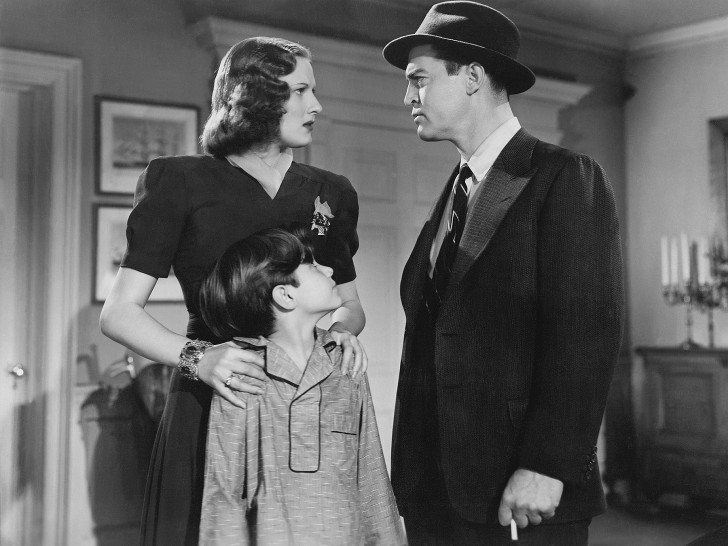
Stranger on the Third Floor
Blind Alley
Shadows come cheap, so low-budget movies can afford to use them lavishly. In Stranger on the Third Floor, cinematographer Nicholas Musuraca weaves cages, webs, fractured mazes and looming silhouettes out of nothing but light and shade—an embrace of German Expressionism that led first-time director Boris Ingster’s radically stylish B-thriller to be anointed the first American film noir. What starts as a conventional crime drama about a fresh-faced young reporter who witnesses a murder becomes a nightmare of mounting uncertainty, guilt and paranoia that shatters the seamless, well-balanced style of classical Hollywood.
Upstaging the nondescript leads are noir icons who cemented their status soon after in The Maltese Falcon: Elisha Cook Jr., whose single scene of pop-eyed hysteria launched his reign as king of the small-time losers; and Peter Lorre, who injects pathos and grotesquerie into a role that asks him to do little besides scuttle around looking sinister in a telltale white scarf. It is tempting to find the hand of Nathanael West, who contributed uncredited screenplay revisions, in the film’s abandonment of the whodunit’s comforting clarity for the diffused guilt of noir. – Imogen Smith
Image courtesy Austrian Film Museum
Chiseled tough guy Chester Morris stars as a psychotic killer who hides out in a lakeside weekend home, only to be locked in an extended fireside showdown with its owner, Ralph Bellamy’s tweedy psychoanalyst, who determines to cure the criminal using the verbal tools of his prolix trade. A seminal proto-noir, Blind Alley marks an important transition between the classic gangster portrait films of the 1930s and the psychoanalytically informed explorations of criminality that would flourish through the end of the studio era. Indeed, the film sets into place dominant noir archetypes of psychotic criminality: analyst investigators and repressed dream/flashbacks as riddles charged with crucial meaning. Despite the slightly starchy theatricality of its performances, the film is energized by the stylized direction of “the other Vidor,” Hungarian émigré Charles Vidor, whose prolific years in B-pictures have long been overshadowed by his other Freudian noir classic Gilda. Lucien Ballard’s apprenticeship as cinematographer for Josef von Sternberg clearly shaped the remarkable dream sequences that further underscore the film’s place as an obscure anticipation of Hitchcock’s Spellbound.





































